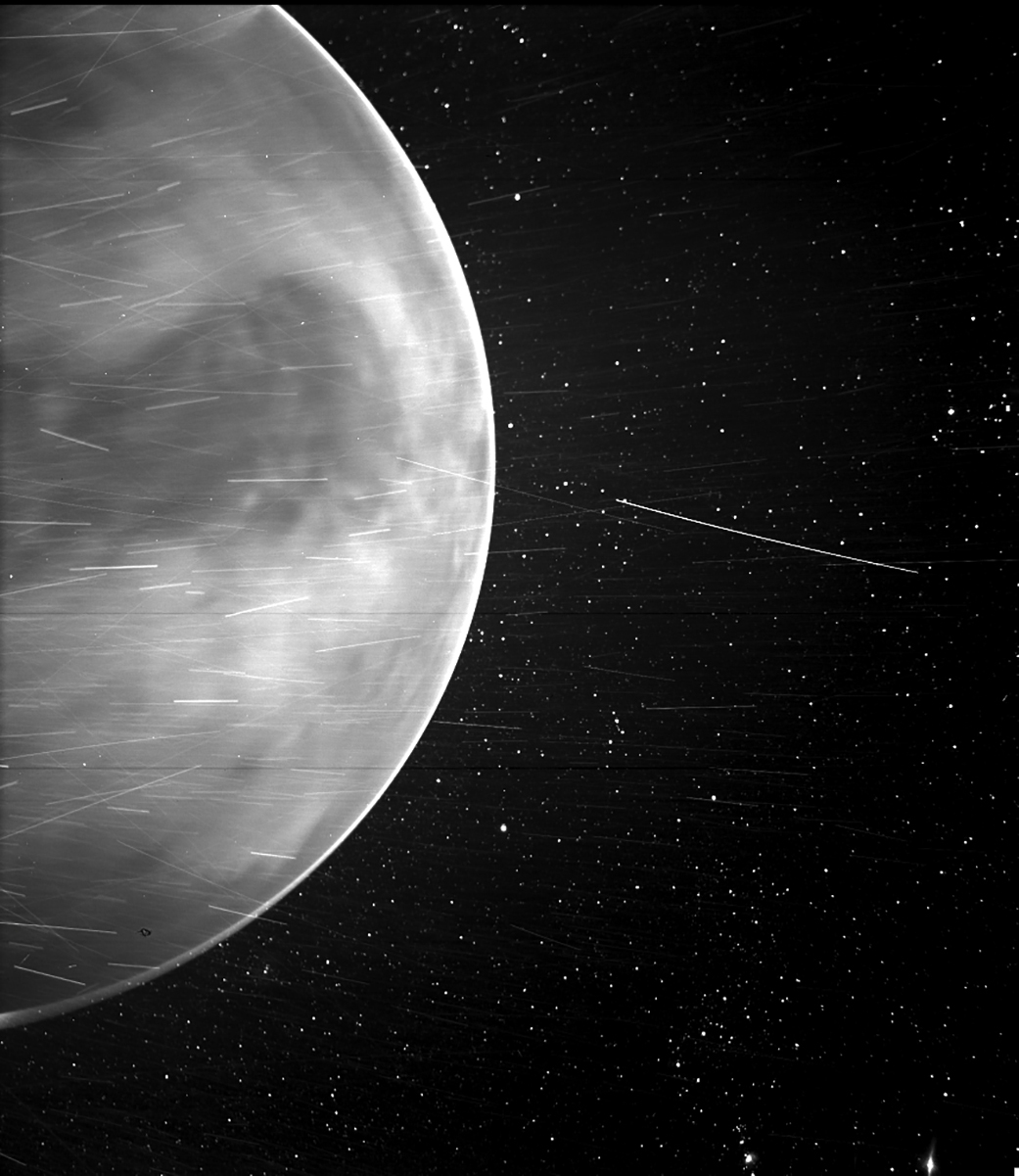A longstanding Venus mystery has been cracked by a NASA sun probe
As the sun's activity waxes and wanes, so too does the ionosphere of Venus, a key layer in the upper atmosphere, according to new observations that cinch a decades-old suspicion.
The new observations come from NASA's Parker Solar Probe, a spacecraft that launched in 2018 on a daring path to inch ever closer to the sun. That trajectory relies on a series of seven close approaches of Venus that serve as steering maneuvers — and the spacecraft team decided to gather data during those flybys.
During one such maneuver in July 2020, the probe made observations that support an intriguing and longstanding idea — that Venus' upper ionosphere contains many more charged plasma particles when the sun is more active and fewer when the sun is less active.
"When multiple missions are confirming the same result, one after the other, that gives you a lot of confidence that the thinning is real," Robin Ramstad, a physicist at the Laboratory of Atmospheric and Space Physics at the University of Colorado, Boulder and co-author on the new research, said in a NASA statement.
Related: Photos of Venus, the mysterious planet next door

The new research shows how scientists scramble to study Venus with whatever observations they can get their hands on, since dedicated missions to our neighboring planet are few and far between.
"I was just so excited to have new data from Venus," Glyn Collinson, an instrument scientist at NASA's Goddard Space Flight Center in Maryland and the lead scientist on the study, said in the same statement.
Get the Space.com Newsletter
Breaking space news, the latest updates on rocket launches, skywatching events and more!
The team studied Parker Solar Probe data gathered on July 11, the spacecraft's third pass of Venus, when the probe came within just 520 miles (830 kilometers) of the planet. (It has since made a fourth flyby, on Feb. 20.) During the flyby, seven minutes of data from an instrument called FIELDS found a specific type of low-frequency radio emission. And when Collinson first saw that data, it looked familiar, but he couldn't place it.
"Then the next day, I woke up," he said. "And I thought, 'Oh my god, I know what this is!'"
The pattern matched data he saw gathered by a completely different NASA mission: the Galileo spacecraft that studied Jupiter and its moons from 1995 to 2003. Each time Galileo ducked into a Jovian moon's ionosphere, it recorded the same type of radio signal that Parker Solar Probe picked up at Venus.
Related: NASA's Parker Solar Probe captures stunning Venus photo during close flyby
But the excitement isn't about merely detecting Venus' ionosphere. Instead, the intrigue comes from the observations' suggestion that on the dark side of the planet, the density of highly charged plasma particles in the ionosphere is changing in response to the sun's behavior.
At the time of the new observations, the sun was just six months past the low point of its 11-year activity cycle. Conveniently, that's a stark difference from previous spacecraft detections of the ionosphere of Venus, which NASA's Pioneer Venus Orbiter made in 1980 and 1992, when the sun was nearly at its most active.
After that decades-old observation, ground-based instruments suggested that while other layers of Venus' atmosphere remained constant, the plasma density of the ionosphere was much lower closer to solar minimum than indicated by those Pioneer observations at solar maximum. But later spacecraft couldn't make similar detections, leaving that suspicion unconfirmed until this new data came down to Earth.
Unfortunately for the researchers, the new observations can't help them decide between two main hypotheses about what causes the changing nightside plasma density. Such knowledge would help shape scientists' understanding of how Venus' atmosphere slips away from the planet and into space.
Related: Hello, Venus! Parker Solar Probe makes second planetary flyby.
All of Parker Solar Probe's observations of Venus are bonus, extras beyond the spacecraft's primary mission to study the sun.
"The goal of flying by Venus is to slow down the spacecraft so that Parker Solar Probe can dive closer to the sun," Nour E. Raouafi, Parker Solar Probe project scientist at the Johns Hopkins University Applied Physics Laboratory in Maryland, said in the same statement. "But we would not miss the opportunity to gather science data and provide unique insights into a mysterious planet such as Venus."
And that's fortunate for Venus scientists. Only one spacecraft is currently orbiting Earth's strange twin, Japan's Akatsuki mission, although NASA is evaluating two potential spacecraft that could visit the dramatic world, with a decision due later this year.
"To see Venus now, it's all about these little glimpses," Collinson said.
The research is described in a paper published on May 3 in the journal Geophysical Research Letters.
Email Meghan Bartels at mbartels@space.com or follow her on Twitter @meghanbartels. Follow us on Twitter @Spacedotcom and on Facebook.
Join our Space Forums to keep talking space on the latest missions, night sky and more! And if you have a news tip, correction or comment, let us know at: community@space.com.

Meghan is a senior writer at Space.com and has more than five years' experience as a science journalist based in New York City. She joined Space.com in July 2018, with previous writing published in outlets including Newsweek and Audubon. Meghan earned an MA in science journalism from New York University and a BA in classics from Georgetown University, and in her free time she enjoys reading and visiting museums. Follow her on Twitter at @meghanbartels.









